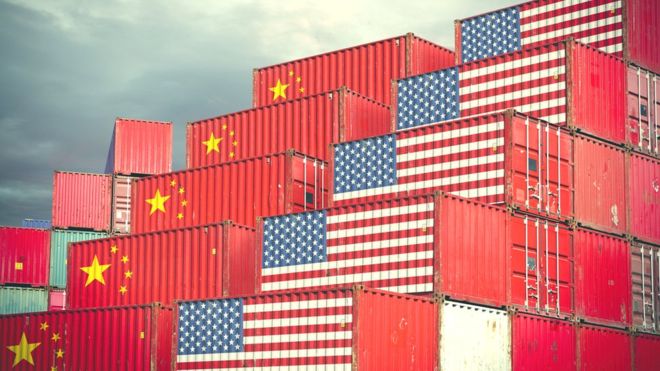PATRICK POLESHUK WRITES — In a cutthroat economic environment in which trading is perceived as a zero-sum game, the placement of tariffs on roughly $250 billion worth of Chinese goods is merely perceived as keeping things fair.
President Trump has held to this view since his 2017 ascension to office, despite wide-scale criticism, both nationally and internationally. Even though much skepticism has been raised regarding the non-restrictive use of tariffs to curve the United States’ growing trade deficit, positive results are starting to show up. Paradoxically, amidst growing deregulation, China’s economy is beginning to falter.
Trump, so certain that the export-driven economy of China would give out more quickly than the U.S. economy, seemingly challenged all professional economist s with opposing views who argued that large-scale protectionism will see U.S. economic growth plummet. Miraculously, we have yet to see this development, while China, on the other hand, struggles to lift itself from its recent economic slump .
Putting aside the arguable severity of the U.S. trade deficit, China has attempted to offset tariff related damage by freeing up its financial sector. In an attempt to stimulate domestic aggregate demand and open itself up to amplified foreign investment, the Chinese economy is hard at work with monetary policy reform. On the surface, though, this remains a work in progress; freeing up China’s allocation of credit to its citizens was originally outlined in the “ Wenzhou Experiment ” several years ago.
Yet the recent deregulation has advanced much farther than previously expected or sought. Reforms are well underway. Last April, CCP regulations were lifted to allow foreign investors and firms wider access to pools of various Chinese Investment. For example, greater access was given to those investing in debt-financing securities, mutual-fund portfolios, controlling stock and financial institution assets. Moreover, Beijing has amplified its loan approvals to smaller, private firms in the region, and has had the required reserve ratio slashed for commercial banks.
This reliance on its less dependent, monetary policy to fix the recent fiscal downturn, however, has failed to produce results. Problems stem from counterintuitive government regulation, which continues to impede Chinese banks from taking on the risks associated with lending. In addition, The People’s Bank of China is responsible for setting a bank’s deposit account, and commercial banks still heavily rely on their benchmarks to gauge its loan interest rate. This produces problems when the account rate is abnormally low, currently less than 2%, as Chinese citizens feel it’s unwise to invest in these banks. Without a consistent financial inflow, however—even if all interest on loans was market-based— banks would still have to slow their distribution of loans or put up with an induced sense of risk.
The previously held firm belief that China is simply ideologically untamable —in the Western eye— seems to be weakening.

